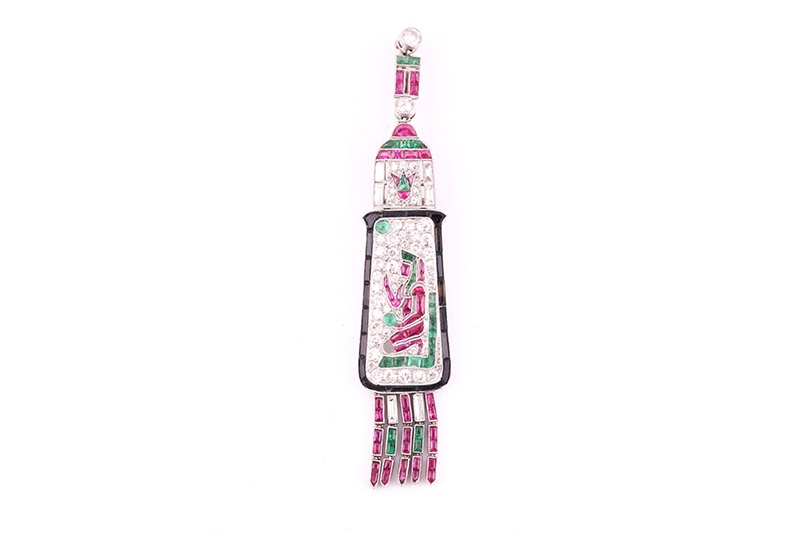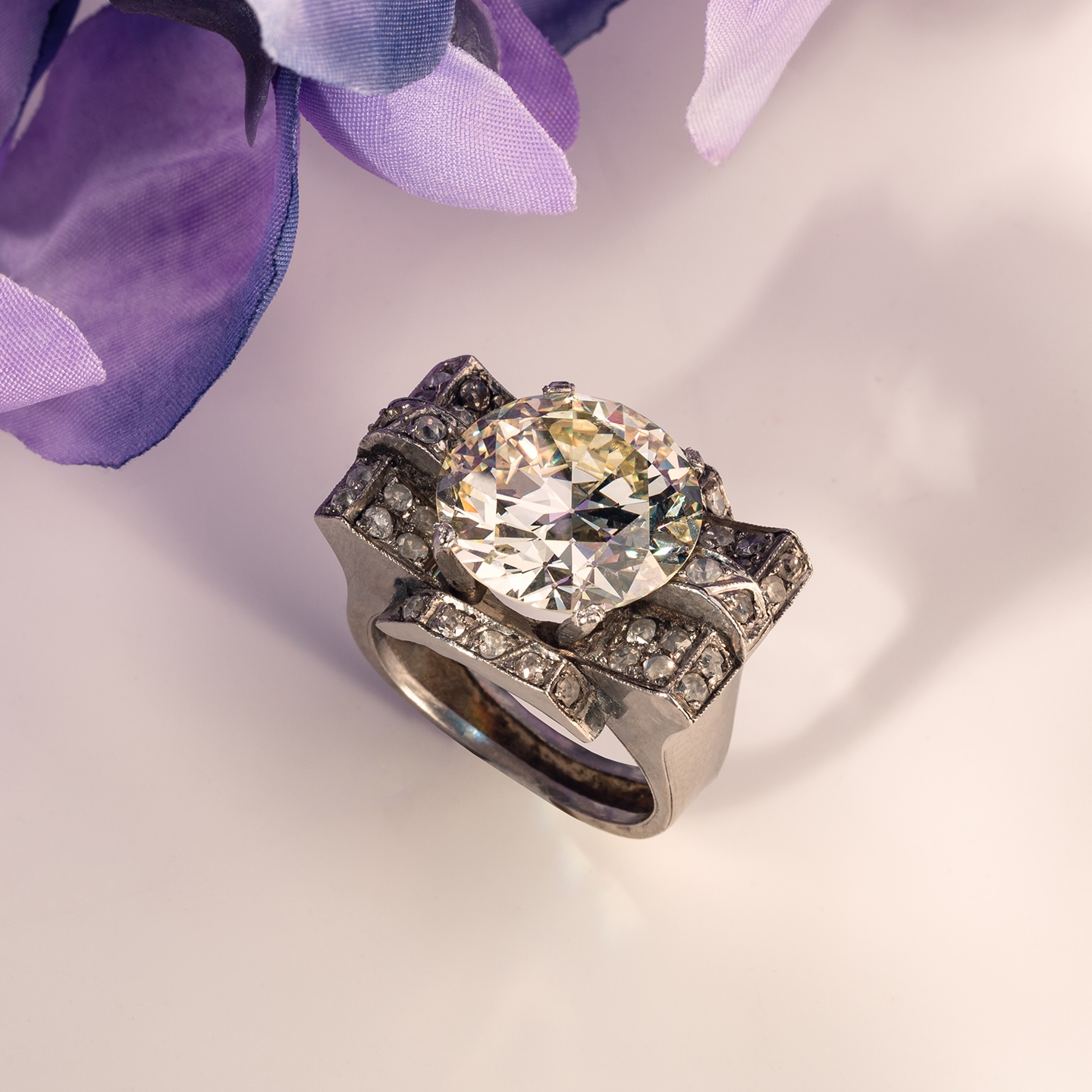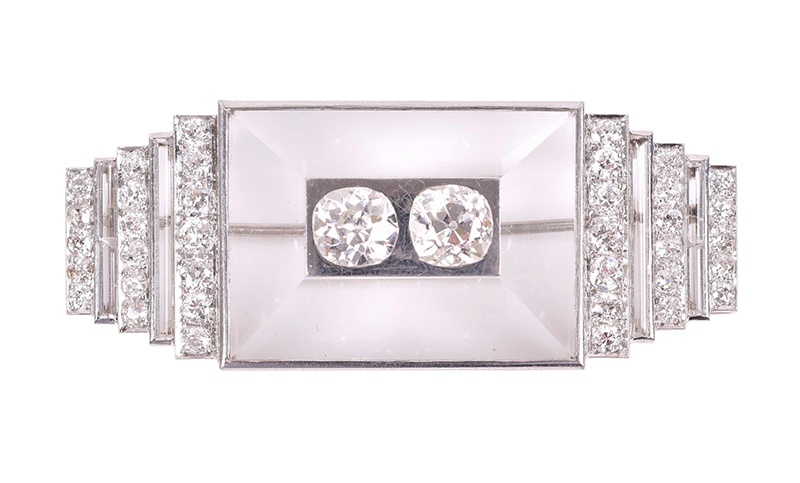Is Art Deco Jewellery Valuable?
An era of historical significance undoubted charm
05/02/2024
Whether it’s an authentic Art Deco Cartier Tutti Frutti bracelet or a genuine Art Deco bakelite necklace, these pieces are indeed valuable, often commanding a premium price due in part to their historical significance and also their undoubted charm.
Originally referred to as "Style Moderne" or "Jazz Moderne", this era lasted from 1919 until 1939 before it was designated “Art Deco” in 1968. The innovative style had a profound effect on society and extended throughout visual and decorative arts influencing architecture, cinema, interiors, jewellery, art, and fashion design still prominent in today’s society.
A French Art Deco platinum and multi gem Egyptian revival pendant
Created between the first and second world wars, Art Deco jewellery remains one of the most coveted amongst enthusiasts and collectors. The characteristic aesthetics originated throughout the 1910s in France, but it wasn’t until the 1925 Exposition Internationale des Arts Décoratifs et Industriels Modernes in Paris that the style gained significant global recognition. Credited as the birthplace of the Art Deco movement, the very best examples of Art Deco jewellery tend to be French. Trailblazers of this era were undoubtedly Maisons’ Cartier, Van Cleef & Arpels and Boucheron, while bijoutiers-joailleriers including Suzanne Belperron, Boivin, Jean Fouquet, Lacloche Frères, Gérard Sandoz, Raymond Templier, Paul Brandt, Dausausoy, and Paul Flato remain highly sought after.
An Art Deco style diamond cocktail ring
Illustrative of the roaring 20s and the dirty 30s, this revolutionary period encompassed the jazz age, the liberation of women, Prohibition parties, and sparkling cocktail soirées… right through to the Great Depression. Rejecting the soft naturalism of Art Nouveau movement and pastel candyfloss of the Belle Époque period, Art Deco jewellery emerged in distinctive geometric lines and bold colour combinations. White gold and platinum dominated trends, while synthetic gemstones were occasionally used. Cultured pearls flooded the market and convertible jewels captivated audiences. Symmetrical designs featured pure white diamonds against contrasting ruby reds and black onyx. Influences from ancient Egyptian, Assyrian, Persian, Indian, Japanese, Greek and Chinese civilisations became evident resulting in some of the most exquisite jewellery produced in the 20th century.
These jewels were produced internationally to varying levels of quality and pricing, with exceptional pieces often being copied in paste and silver. Indeed, the development of new plastics such as Bakelite - which imitated amber - resulted in fashion jewellery that was an art form in its own right.
Daring and original, this iconic style remains striking, contemporary, and timeless, fetching prices from a few hundred pounds to millions. The maker, design, materials, and size will affect the value, nevertheless Art Deco jewellery rarely fails to impress and continues to be a sound investment. Exceptional examples of Art Deco jewellery are becoming increasingly rare and achieving record breaking prices.
read more
How Do I Identify Art Deco Jewellery?
Are you thinking of selling any Art Deco jewellery?
Our experts would be delighted to provide you with a sales advice and a complimentary valuation.
With a global audience of 10 million active bidders at every sale, we can help you achieve the best price.


